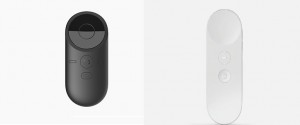Google’s announcement of the Daydream mobile virtual reality (VR) platform at Google I/O 2016, Mountain View, has stirred up some interesting areas of debate. While many are choosing the most obvious comparison, the mobile Gear VR head-mounted display (HMD), its Oculus VR’s other HMD, the Oculus Rift, that seems to have inspired Google’s reveal.
While Daydream is intrinsically similar to the Gear VR based on the fact that it utilises a mounted smartphone for visual and audio processing and display, operates wirelessly and is built upon the Android platform, the presentation of the device is more readily comparable to the Oculus Rift. From the physical presentation of the HMD and it’s controller to the visual aesthetic of its virtual store, Daydream has been presented in a way that closely resembles what is currently widely thought of as being VR’s leading platform.
The demonstration of the HMD itself, though suggested as being a ‘reference design’, is posed in a similar angle and presentation to the consumer version of the Oculus Rift’s original reveal imagery. Superficial as this may seem, it clearly demonstrates the influence of Oculus VR beyond simply leading the charge for the new medium. This view is further reinforced when looking at the input device that is set to be bundled with Daydream in comparison to the Oculus Rift’s own Remote.

It could be argued that both the HMD and input device are presented similarly to the Oculus Rift as, quite simply, this is the design that has been primed for the most comfortable and cost-effective VR products. However, one area where Google really doesn’t need to be following the path blazed by a rival is in that of digital content distribution. Yet, for some reason, Daydream’s virtual store is presented very similarly to that of Oculus Home.

Of course, Daydream is still approximately six months from release. As such there could be many changes to the HMD and associated items in the meantime, both in technical design and aesthetics. As always, VRFocus will keep you updated with all the latest detail.















